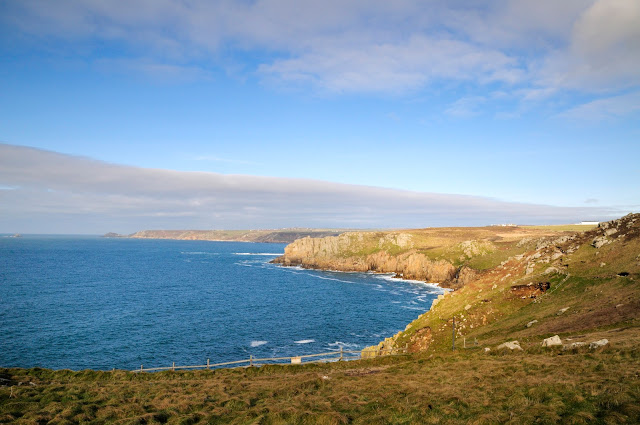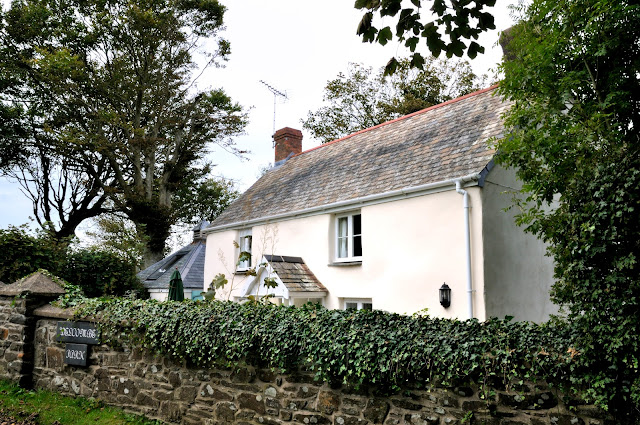To quote the Telegraph newspaper "It’s the light. That’s what always strikes visitors who come to St Ives. Jutting out from the coastline, the town, which is surrounded by beaches, is bathed in a soft, romantic glow that makes everything look like Instagram-perfection: no filter necessary.
This is the reason why many prominent artists were drawn here and have left behind a rich heritage. As the sculptor Barbara Hepworth said of her adopted home: “The horizontal line of the sea and the quality of light and colour… reminds me of the Mediterranean light and colour, which so excites one’s sense of form.”
And it was one of our destination for this Blog. But before we get there, a visit to the beautiful Cape Cornwall.
Cape Cornwall
Cape Cornwall is a small headland in West Cornwall, UK. It is four miles north of Land's End near the town of St Just. A cape is the point of land where two bodies of water meet. Until the first Ordnance Survey, 200 years ago, Cape Cornwall was believed to be the most westerly point in Cornwall.
Most of the headland is owned by the National Trust. National Coastwatch has a look-out on the seaward side. The two offshore rocks in the distance are called The Brisons.
And so onto St Ives - The tide is definitely out!
St Ives - view of one of the beautiful beaches from the headland.
The Tate - St Ives.
St Ives, as a small Cornish town on the southwest coast of England, perhaps seems an unlikely site for a major art gallery. However, its artistic connections date back to Victorian times when numerous artists came to St Ives to paint, attracted by its special quality of light. Artists associated with the town include Barbara Hepworth, Naum Gabo, Alfred Wallis and Mark Rothko.
Tate had formed a close link with St Ives when it took over the management of the Barbara Hepworth Museum and Sculpture Garden in 1980. By the middle of the decade it was decided a gallery should be built there to show works by artists who had lived or worked in St Ives, loaned from the collection.
In 1988, a building was chosen on the site of a former gasworks overlooking Porthmeor Beach and the Atlantic Ocean. The architects Eldred Evans and David Shalev were selected for designs that echoed the shapes of the former gasworks, including the rotunda that forms the heart of the gallery.
Building work began in 1991, funded by donations from the local community, the Henry Moore Foundation and the European Regional Development Fund. The Tate Gallery, St Ives opened in June 1993 and in just six months welcomed over 120,000 visitors – 50,000 more than the original target for the entire year. Since then, the gallery has been an outstanding success with an average of 240,000 visitors per year.
As a result of the large number of visitors at the gallery, it was decided to refurbish and extend Tate St Ives. The making of the new Tate St Ives completed in summer 2017.
The Lizard
The Lizard Lifeboat Station can refer to several Royal National Lifeboat Institution lifeboat stations located on The Lizard in Cornwall, United Kingdom. The first was established at the southernmost point of the peninsula in 1859. Since then successive stations have all been in operation at different locations on The Lizard. The current station is located at Kilcobben Cove 0.5 mi (0.80 km) east of the village of Lizard.
The lifeboat stations have all covered the westerly approaches to the English Channel; with up to 400 ships-a-day, it is one of the busiest shipping lanes in the world. The lifeboat service has saved many lives over the past 150 years.
St Wynwallow Church, Landewednack
St Wynwallow's Church, Landewednack, is the parish church of Landewednack parish in Cornwall, England, United Kingdom. It is the most southerly church in mainland Britain and is situated approximately ten miles (16 km) south of Helston. It was founded about 600 AD but the present structure dates to the twelfth century.
The church is dedicated to St Winwaloe and is Church of England. St Winwaloe was the third son of a Cornish couple who moved to Brittany. There he founded the monastery of Landévennec. There is no evidence that he visited Cornwall, and the church may have been founded by one of the monks from Landévennec, or perhaps by St Winwaloe elder brother, Wennoc. Nothing remains of the original building.
The oldest part of the current church building is the twelfth century Norman doorway. The substantial tower is constructed of blocks of granite and serpentine giving it a checkerboard appearance. Other notable features are the serpentine pulpit and the font, which dates to the fifteenth century.
The church was restored in the thirteenth century when the porch was added and in the fifteenth century when a new window was inserted into the tower. It is now a Grade I listed building. The last Cornish language sermon was preached here in 1674, though this claim has also been made for the churches of Towednack and Ludgvan.
Just a few images of the beautiful bays and coves all around this lovely county.
Patterns formed by shells in between the rocks





























































